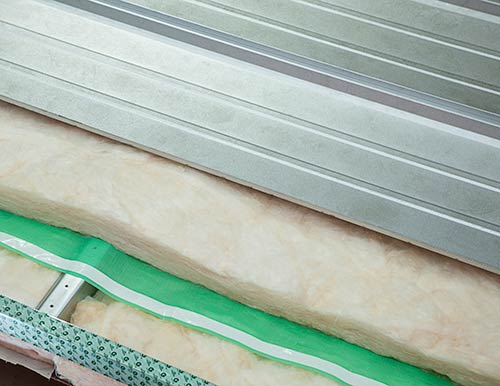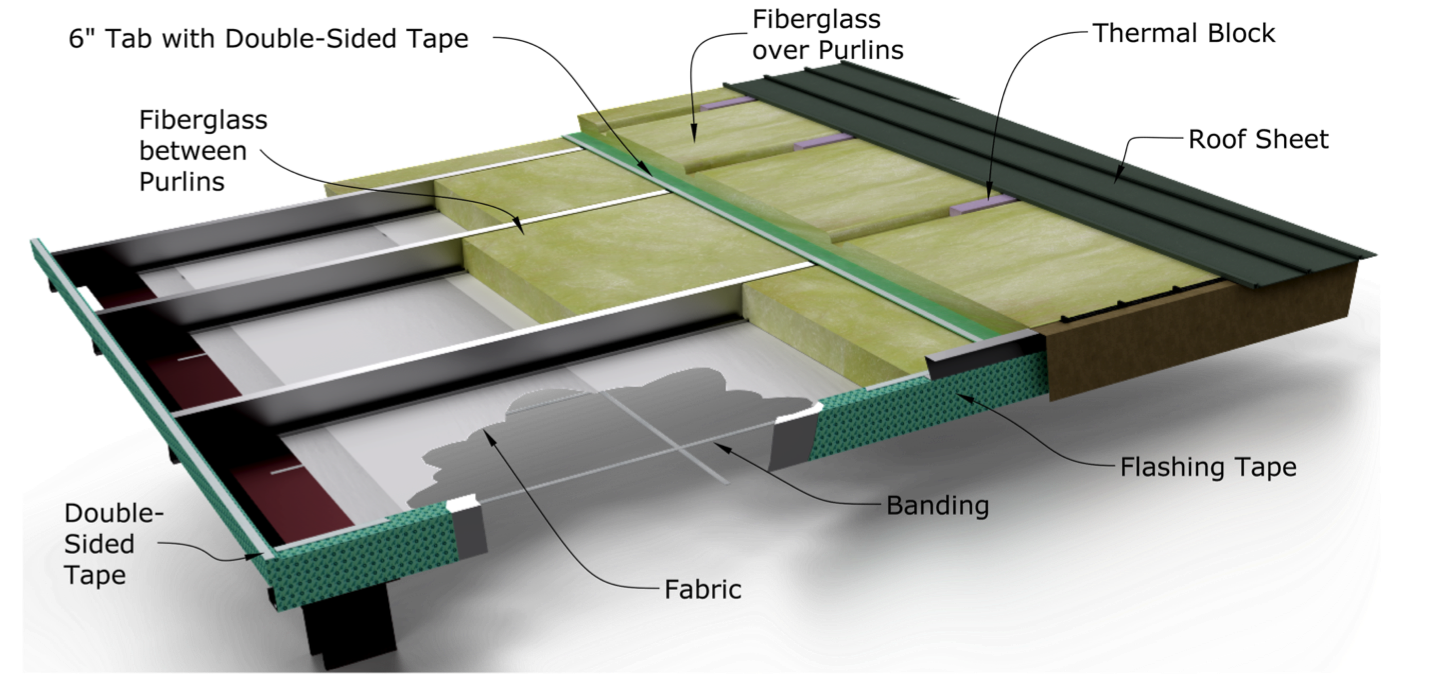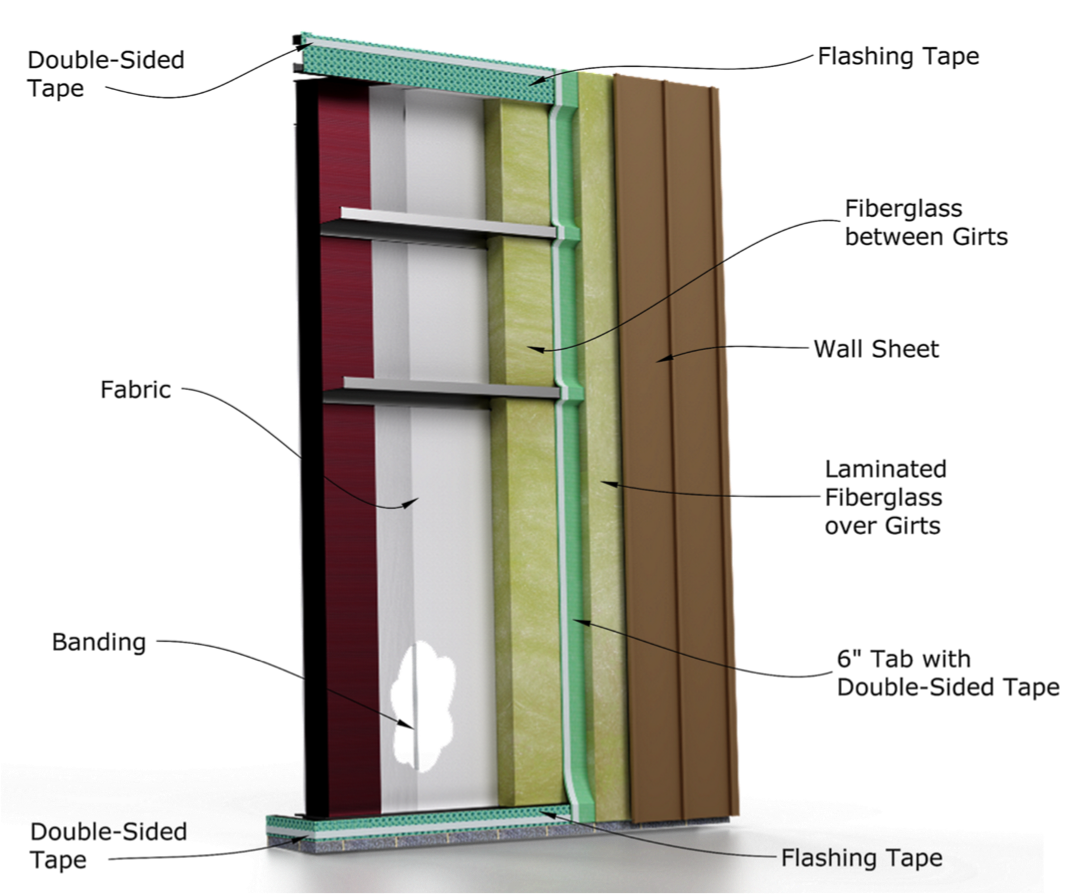
MaxTight™ Air Barrier System
What is Our Air Barrier Insulation System?
Therm-All’s new patented air barrier insulation system for metal buildings consists of a vapor retarder, at least one layer of fiberglass, and a continuous air barrier.
The location of the air barrier is what makes MaxTight™ unique. The air barrier material is placed within the thermal envelope, which means that mechanical, electrical and other tradespeople won’t poke holes in it as they would a typical exposed vapor barrier. The MaxTight™ system provides a fully sealed airtight envelope.
- Reduces air leakage and air infiltration within the building envelope by up to 40%
- Is more effective than a standard exposed vapor retarder
- Meets the IECC and ASHRAE air barrier requirements
- Standard single layer metal building applications
- Double layer Sag and Bag applications
- Double layer Long Tab Banded applications
- Double layer High-R Liner System applications

How Does an Air Barrier System Work?
Figure 1: Roof Application for Double Layer High-R Liner Systems (Ls)
For this application, the second layer of fiberglass is laminated with the air barrier material and placed perpendicular to the roof purlins. This also has a leading edge tab that is 6” wide and a factory applied double-sided tape so each run of material is easily joined and sealed. The eave and rake angles of the roof area are also wrapped in flashing tape, and the roof material is sealed in these areas as well. The flashing tapes and all accessories are included as part of the MaxTight™ system.

Figure 2: Wall Application for Double Layer High-R Liner Systems (Ls)
In this application, the outer layer of wall fiberglass is laminated with the air barrier material and installed with the wall panels. The laminated layer has one 6” tab with factory applied double-sided tape to ensure that each run of material is easily joined and sealed. The base angle and eave strut are wrapped with flashing tape and the wall material is sealed to these arrears, which creates a completely airtight assembly.
The walls of a metal building use many different types of fiberglass systems. MaxTight ™ has many options that allow air barrier placement within the thermal envelope in each of these applications.

Other Applications
Single Layer Applications
In a single layer application, the air barrier material is laminated to the opposite side of the vapor retarder. This allows for placement of the air barrier against the exterior sheeting of the metal building.
Double Layer Sag and Bag Applications
In a double layer Sag and Bag application, the air barrier is laminated to the opposite side of the vapor retarder much like in a single layer application. The second layer of unfaced fiberglass is then placed on top of the air barrier insulation system.
Want more information about MaxTight™? Call us, the premier metal building insulation supplier, at 888-2-INSUL-8.
